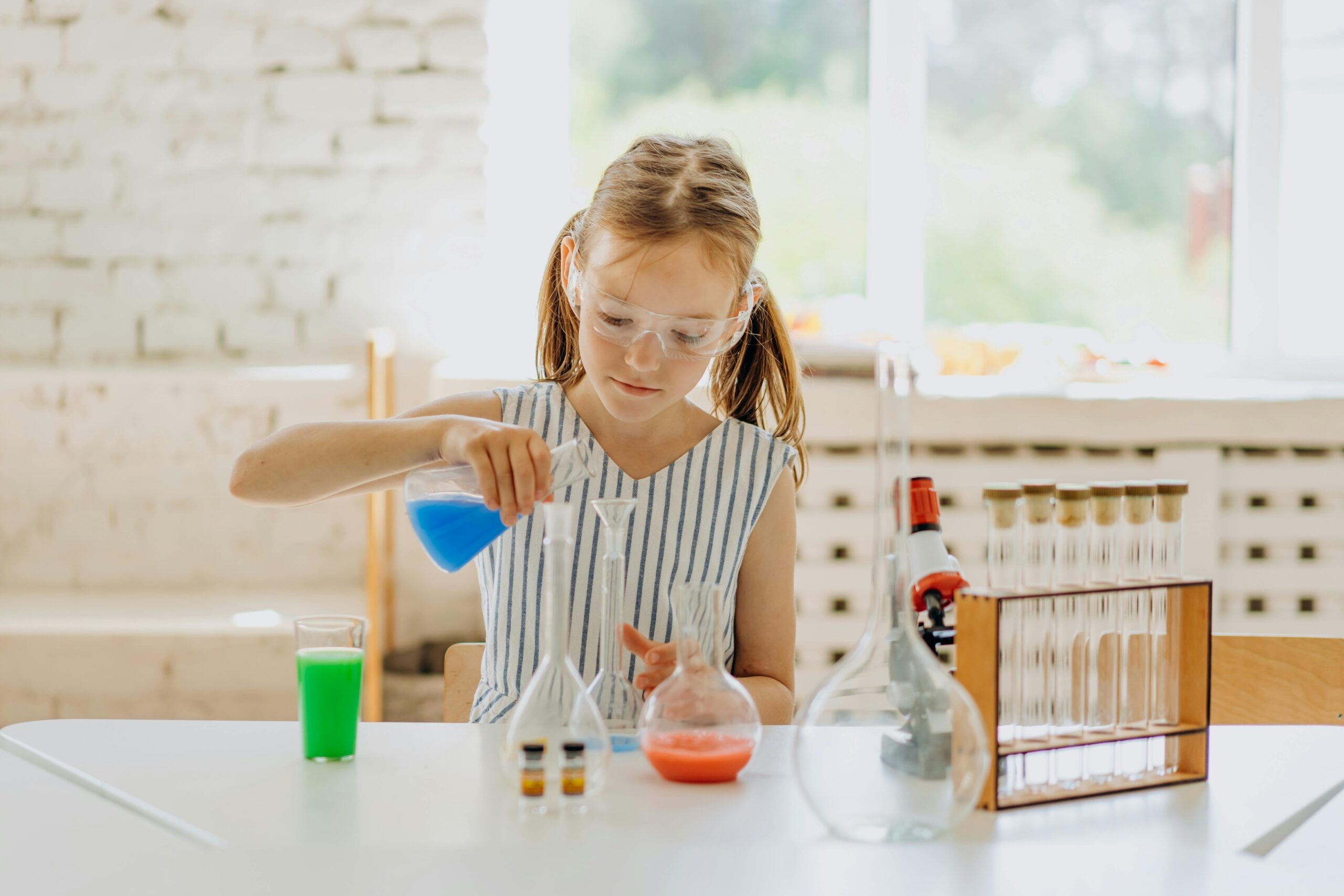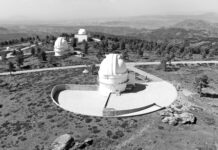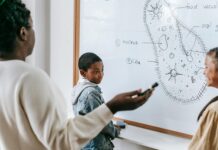Are you ready to ignite young minds with fun and engaging science activities for kindergarten? In this article, we’ll explore a variety of hands-on experiments and projects that not only captivate children’s imaginations but also foster a love for learning! Science is all around us, and introducing it to young learners is crucial for developing their critical thinking and problem-solving skills. So, how can you spark this scientific curiosity in your little ones?
Incorporating science activities into your kindergarten curriculum can be both educational and entertaining. From simple science experiments that involve everyday materials to exciting nature explorations, there’s no shortage of ways to bring the wonders of the universe into the classroom or home. Imagine the delight on your child’s face as they watch a homemade volcano erupt or observe the growth of a plant from a seed! These kinds of activities not only teach essential concepts but also encourage teamwork, creativity, and communication among young learners.
Additionally, by making science fun, you are setting the foundation for lifelong learning. Have you ever wondered how to make learning stick? Interactive and playful experiences resonate with children, making them more likely to retain information. In this article, we’ll dive deep into innovative ideas and easy-to-follow science experiments that will help educators and parents alike to nurture a burgeoning interest in science. So, let’s embark on this exciting journey of discovery, and watch as your kindergarteners transform into little scientists ready to explore the world!
10 Engaging Science Experiments for Kindergarten: Spark Curiosity in Young Learners
Science is a wonderful way to engage young minds, and what better way to spark curiosity than through fun experiments? Kindergarten is a crucial time for children to explore and learn about the world around them. With simple science activities for kindergarten, you can ignite their imaginations and help them understand basic concepts. Here are 10 engaging science experiments that are perfect for little learners.
1. Color Mixing Fun
Children loves colors, and this experiment allows them to see how colors mix together. You will need clear containers, water, and food coloring. Fill each container with water and add different food coloring to each one. Then, have the kids pour the colored water into a new container to see what new colors they create. This experiment not just teaches color mixing but also introduces basic concepts of liquid dynamics.
2. Dancing Raisins
A classic experiment that never gets old is the dancing raisins. Grab a clear glass, some carbonated water, and a handful of raisins. When you drop the raisins in the glass, they will sink at first. But then, bubbles start to form on the raisins, lifting them to the surface. Kids will be delighted to see this action while learning about buoyancy and gas.
3. Homemade Volcano
Creating a volcano is a blast, literally! You can use baking soda, vinegar, and food coloring to make an erupting volcano. Just mix baking soda with food coloring in a small container, and then pour vinegar over it. The chemical reaction will creates an explosion of fizz, which is not only fun but also teaches kids about chemical reactions.
4. Plant Growth Experiment
To teach kids about plants, you can have them plant seeds in different conditions. Use pots with soil, and plant the same type of seeds in each pot. Place one pot in sunlight, one in a dark place, and another in a cool area. Over time, kids can observe how the plants grows differently in each condition. This activity helps children understand what plants need to thrive.
5. The Magic of Static Electricity
For this experiment, you will need a balloon and some small pieces of paper or confetti. Inflate the balloon and rub it on your hair or a wool sweater to create static electricity. Then, hold the balloon near the paper pieces, and watch as they jump towards the balloon. This is a fun way to introduce the concept of static electricity and its effects.
6. Sink or Float
This activity is simple and requires only a bowl of water and various household items. Gather items like a spoon, a leaf, a small toy, and a stone. Have the children predict whether each item will sink or float before dropping it in the water. This experiment not only promotes critical thinking but also introduces the principles of density and buoyancy.
7. Shadow Play
Children loves to play with shadows, and you can turn that into a learning experience. On a sunny day, take a white sheet and place it on the ground. Use various objects to block the sunlight and create shadows. Kids can trace the shadows with chalk or mark where the objects were. This teaches them about light, shadow, and angles.
8. Ice Melting Race
This experiment is a fun way to introduce concepts of temperature and states of matter. Get several cups of ice, and place them in different areas: one in the sun, one in the shade, and one indoors. Have the kids guess which ice will melt the fastest and why. It gives kids a hands-on experience with understanding temperature effects on ice.
9. The Balloon Rocket
For this activity, you need a balloon, some string, and a straw. Thread the straw through the string and tie the string in a straight line. Inflate the balloon without tying it, and tape it to the straw. When you release the balloon, it will zoom along the string. This is a great way to introduce concepts of propulsion and Newton’s third law of motion.
10. Homemade Lava Lamp
Creating a lava lamp is a visually stunning way to teach kids about density. Fill a clear bottle with water and then add vegetable oil. Next, add food coloring. The water will sink to the bottom while the oil stays on top. When you add a fizzy tablet, the reaction will create colorful bubbles that rise and fall, simulating a lava lamp. Kids will love watching this mesmerizing effect!
These science activities for kindergarten not just entertain, but also educate. Engaging children in hands-on experiments can lead to a love for science that lasts a lifetime. With these fun and simple experiments, you can turn any day into a science adventure. Remember to encourage questions and curiosity, as they are the keys to learning! By fostering an environment where young learners can explore, we can inspire the next generation of scientists.
Fun and Easy Science Activities for Kindergarten: Hands-On Learning for Little Explorers
Are you looking for some fun and engaging ways to introduce science to the little explorers in your life? Science activities for kindergarten can be a fantastic way to ignite young minds today! Children at this age are naturally curious and eager to learn about the world around them. Hands-on learning is one of the best methods to teach them basic scientific concepts, and it make learning fun! Here are some simple and easy science activities that will not only keep your kids entertained but also educate them in a playful way.
The Magic of Baking Soda and Vinegar
One classic experiment that always delight young children is the reaction between baking soda and vinegar. It’s simple, safe, and produces immediate results.
What You Need:
- Baking soda
- Vinegar
- A clear container (like a glass or a plastic bottle)
- Food coloring (optional)
How to Do It:
- Pour a few tablespoons of baking soda into the container.
- Add a few drops of food coloring if you want to make it visually appealing.
- Slowly pour in the vinegar and watch the fizzing reaction!
This activity teaches kids about chemical reactions and gas production. They can also predict what will happen before they pour in the vinegar, fostering critical thinking skills.
Planting Seeds for Science
Gardening can be a great way to teach children about nature and biology. Planting seeds is an easy activity that can lead to a long-term project.
What You Need:
- Seeds (like beans or flowers)
- Soil
- Pots or cups
- Water
How to Do It:
- Fill the pots with soil.
- Plant the seeds about an inch deep.
- Water them lightly and place them in sunlight.
Kids can observe how seeds grow into plants over time, and they can even keep a journal of their observations, noting the changes they see. This activity also introduces basic concepts of life cycles and ecosystems.
Exploring the Weather
Teaching kids about weather can be both fun and educational. You can create a weather station at home or in the classroom.
What You Need:
- A thermometer
- A rain gauge (you can make one with a plastic bottle)
- A wind vane (you can make one using a straw and paper)
How to Do It:
- Place the thermometer outside to measure the temperature.
- Use the rain gauge to collect rainwater and measure how much it rains.
- Create a wind vane to show wind direction.
This activity allows children to learn about different weather conditions and how to measure them. They can also track the weather over a week or month, making connections between weather changes and their daily lives.
Fun with Magnets
Exploring magnets is another great way to introduce basic physics concepts. Kids love seeing how magnets can attract or repel items.
What You Need:
- A variety of magnets (fridge magnets, bar magnets, etc.)
- Various small objects (paper clips, coins, plastic toys)
How to Do It:
- Let the kids experiment by bringing the magnets close to different objects.
- Ask them to predict which objects will be attracted to the magnet and which ones won’t.
This activity will help them understand the concept of magnetism and the properties of different materials. It’s also a fun way to practice making hypotheses and testing them.
Creating a Simple Volcano
Who doesn’t love a volcano? Making a volcano is a splendid way to introduce geology and chemical reactions at the same time.
What You Need:
- Baking soda
- Vinegar
- A small bottle or container
- Red food coloring (optional)
- Clay or playdough (to shape the volcano)
How to Do It:
- Shape the clay around the bottle to create a volcano structure.
- Fill the bottle with baking soda.
- Add food coloring for effect, and then pour in the vinegar to see the eruption!
This activity can teach kids about volcanic eruptions, chemical reactions and also gives them a chance to express their creativity while building the volcano.
The Science of Colors with a Rainbow
Creating a rainbow is a fun and visually engaging way to teach kids about light and colors.
What You Need:
- A glass of water
- A flashlight
- A white piece of paper
How to Do It:
- Fill the glass with water and place it on the edge of a table.
- Shine the flashlight through the water onto the paper on the ground.
- Watch as a rainbow forms!
This activity illustrates how light travels and refracts
Why Science Activities are Essential for Kindergarten: Boost Creativity and Critical Thinking
In the bustling world of kindergarten classrooms, the importance of science activities can’t be overstated. These activities not only boost the creativity of young minds but also develop critical thinking skills. Engaging kids in science opens their eyes to how the world works, and it makes learning fun and exciting. So, why science activities are essential for kindergarten? Let’s explore.
The Role of Science in Early Education
Science is not just about experiments and laboratory coats; it is fundamental to understanding the environment and the universe around us. In kindergarten, children are naturally curious. They ask questions about everything, from why the sky is blue to how plants grow. Science activities harness this curiosity, allowing children to explore and learn in a hands-on way.
Research shown that early exposure to science fosters a love for learning. Kids who engage in science activities in their formative years are likely to continue exploring these subjects as they grow older. This early engagement can lead to a lifetime of inquiry and exploration.
Benefits of Science Activities for Kindergarten
Engaging in science activities offers several benefits for young learners, such as:
- Promotes Curiosity: Kids love to ask questions, and science activities provide answers through exploration.
- Enhances Problem-Solving Skills: Hands-on activities encourage kids to think critically and solve problems.
- Fosters Creativity: Science isn’t just about facts; it allows for creative expression through experiments.
- Encourages Teamwork: Many science activities are best done in groups, teaching kids how to collaborate and share.
- Develops Fine Motor Skills: Activities like building models or conducting simple experiments improve dexterity.
Examples of Fun Science Activities for Kindergarten
There are endless possibilities when it comes to science activities for kindergarten. Here are some examples that can ignite young minds today:
Plant Growth Experiment: Kids can plant seeds in different types of soil or light conditions and observe what happens. This teaches them about plant biology and the factors that affect growth.
Water Cycle in a Bag: Using a zip-lock bag filled with water and a few drops of blue food coloring, kids can observe evaporation and condensation. They can hang the bag on a sunny window and watch the water cycle in action.
Simple Chemical Reactions: Mixing baking soda and vinegar in a clear cup creates a fizzy reaction that kids find fascinating. They can learn about acids and bases while having fun.
Nature Scavenger Hunt: Taking kids outdoors to collect leaves, rocks, and flowers helps them learn about biodiversity. They can categorize their finds, enhancing observation skills.
Magnet Exploration: Provide various objects and let kids test which ones are magnetic. This is a fun way to teach them about magnetism and materials.
The Historical Context of Science Education
Historically, science education has evolved significantly. In the early 20th century, education focused heavily on rote memorization. But as we move into the 21st century, there is a strong emphasis on experiential learning. The National Science Education Standards, developed in the 1990s, emphasized the importance of hands-on activities in science education. This shift changed how science is taught in classrooms across the globe, including kindergartens.
How to Integrate Science into Daily Learning
Integrating science into daily learning doesn’t have to be complicated. Here are some practical tips:
Incorporate Science in Story Time: Choose books that talk about science concepts. Discuss the ideas and encourage kids to ask questions.
Use Everyday Items: Household items can be used for experiments. For example, use kitchen ingredients to demonstrate chemical reactions or physical changes.
Create a Science Corner: Dedicate a space in the classroom for science exploration where kids can freely experiment with different materials.
Host Science Days: Organize events where kids can showcase their science projects or experiments to their peers and parents.
Leverage Technology: Use educational apps that focus on science concepts to engage tech-savvy kids.
In conclusion, science activities for kindergarten play an integral role in shaping young minds. They fuel curiosity, inspire creativity, and develop critical thinking skills. By providing children with opportunities to explore scientific concepts through engaging activities, educators and parents can help ignite a lifelong passion for learning. So, let’s embrace the wonders of science and encourage the next generation of thinkers and innovators!
Top 5 Trending Science Themes for Kindergarten: Explore Nature, Space, and More!
Exploring the world of science is a fundamental part of a child’s development, especially for kindergarteners. At this age, young minds are naturally curious, and they tend to ask a lot of questions about everything around them. That’s why it’s essential to introduce them to science activities that are engaging and educational. This article will dive into the top 5 trending science themes for kindergarten that will surely ignite young minds today. From exploring nature to the mysteries of space, let’s embark on this fascinating journey!
1. Nature Exploration
Kids love to explore the outdoors, and nature activities are a perfect way to do this. Engaging children in nature helps them learn about ecosystems, plants, and animals. One fun activity could be a nature scavenger hunt.
- Items to Find:
- Different types of leaves
- Flowers of various colors
- Insects like ants or butterflies
- Rocks of different sizes
- Bird songs
By collecting these items, children learn how to observe their environment closely. They can even create a nature journal where they draw or write about their findings. This kind of exploration not only enhances their observational skills but also instills a sense of wonder about the natural world.
2. Space Adventures
The vastness of space is another exciting theme for kindergarten science activities. Kids are often fascinated by planets, stars, and the idea of astronauts. You can simulate a mini-space mission in the classroom or at home.
- Activities might include:
- Building a model of the solar system with balls and paint
- Creating a rocket ship out of cardboard
- Learning about the phases of the moon using Oreo cookies
- Watching videos of real space missions
These activities can spark interest in astronomy and science. They can also teach children about gravity, the importance of the sun, and the differences between planets.
3. Weather Wonders
Weather is a daily part of life, and understanding it can be both fun and educational. Teaching kindergarteners about weather can involve simple experiments and observations.
- Experiments could involve:
- Creating a rain gauge with a clear plastic bottle
- Making a simple barometer with a balloon and jar
- Observing clouds and predicting the weather based on their shapes
Children can also keep a weather diary to note how the weather changes each day. This activity encourages them to look outside and notice what’s going on in the world around them.
4. Simple Machines
Introducing the concept of simple machines is a great way to teach basic physics. Kindergarteners can learn about levers, pulleys, and wheels through hands-on activities.
- Fun activities could include:
- Using toy cars to demonstrate wheels and axles
- Building a seesaw to understand levers
- Creating a pulley system with string and small objects
These activities not just teach them about how machines work, but they also promote problem-solving skills. Kids learn to think critically about how to make things easier or more efficient.
5. Plant Growth
Teaching children about plants and their life cycles can be incredibly rewarding. Gardening activities are a fantastic way to illustrate these concepts.
- Activities might include:
- Planting seeds in small pots and observing their growth
- Learning about the parts of a plant (roots, stems, leaves)
- Exploring how plants need sunlight and water to thrive
Kids can even create a “garden journal” where they draw the stages of growth. This hands-on experience not only nurtures responsibility but also helps them understand the importance of plants in our ecosystem.
Engaging kindergarteners with science activities can significantly shape their understanding of the world. Whether it’s exploring nature, venturing into space, or learning about weather, each activity builds a foundation for lifelong learning. It’s important to create a learning environment that encourages curiosity. By integrating these trending science themes into their daily activities, you can help ignite a passion for science in young minds. So, grab some supplies, gather your little explorers, and let the adventures in science begin!
DIY Science Projects for Kindergarten: 7 Simple Ideas You Can Do at Home
In today’s world, engaging young minds with science can be both fun and educational. DIY science projects for kindergarten offer a perfect way to spark curiosity while developing critical thinking skills. These activities not only entertain but also help children of this age group grasp fundamental concepts in science. If you’re looking for a way to ignite young minds today, here are seven simple ideas you can do at home that will surely keep little ones excited about learning.
1. Homemade Volcano
Creating a homemade volcano is one of the classic science activities for kindergarten. It teaches kids about chemical reactions in a fun way.
What you need:
- Baking soda
- Vinegar
- Food coloring (optional)
- A container (like a plastic bottle)
- Tray (to contain the mess)
Steps:
- Place the container on the tray.
- Fill the container halfway with baking soda.
- Add a few drops of food coloring if desired.
- Pour in vinegar and watch the eruption!
2. Rainbow in a Jar
This colorful experiment demonstrates density and how liquids can layer based on their density.
What you need:
- Clear jar
- Honey
- Dish soap
- Water
- Olive oil
- Food coloring
Steps:
- Start with honey at the bottom, then slowly pour in dish soap.
- Mix food coloring with water and pour it next.
- Finally, add olive oil on top, and see the layers form!
3. Plant Growth Experiment
Understanding how plants grow is essential for young learners. Kids can plant seeds and observe their growth over time.
What you need:
- Seeds (like beans or sunflowers)
- Soil
- Small pots or recycled containers
- Water and sunlight
Steps:
- Fill the pots with soil and plant one seed in each.
- Water them lightly and place them in a sunny spot.
- Have children observe and record their growth every few days.
4. Homemade Slime
Slime is a favorite among kids, and making it can teach them about polymers and the science of states of matter.
What you need:
- White glue
- Baking soda
- Contact lens solution
- Food coloring (optional)
Steps:
- Mix glue and baking soda in a bowl.
- Add food coloring if desired.
- Slowly add contact lens solution while stirring until it forms slime.
5. Water Cycle in a Bag
This project visually demonstrates the water cycle and helps kids understand evaporation and condensation.
What you need:
- Ziplock bag
- Water
- Permanent markers
- Sunlight
Steps:
- Fill the Ziplock bag with a small amount of water.
- Seal the bag and draw the sun and clouds on it.
- Tape it to a sunny window and watch the water cycle!
6. Static Electricity with Balloons
This fun experiment introduces children to static electricity, an essential concept in physics.
What you need:
- Balloons
- Small pieces of paper or confetti
Steps:
- Inflate the balloon and rub it on your hair or a wool sweater.
- Hold it near the paper pieces and watch them jump to the balloon!
7. Baking Soda and Vinegar Rocket
This exciting project shows kids the principles of propulsion and force through a mini rocket launch.
What you need:
- Film canister or small plastic bottle
- Baking soda
- Vinegar
- Tissue or paper towel
Steps:
- Place a tablespoon of baking soda in the tissue and wrap it up.
- Pour a bit of vinegar into the canister and quickly place the tissue inside, sealing it tightly.
- Step back and watch your rocket launch!
These DIY science projects for kindergarten not only provide a hands-on learning experience but also encourage curiosity and creativity among young children. Not only do these activities promote learning in a fun way, but they also foster important life skills such as patience, observation, and problem-solving.
Parents and educators can easily adapt these science activities for kindergarten to suit their needs. They can encourage kids to ask questions about what they observe and even come up with variations of the experiments. By integrating these simple yet effective projects into your routine, you are laying the groundwork for a lifelong love of science in your children.
Incorporating such activities into your child’s life is a great way to ignite their minds and nurture their scientific curiosity. So why not get started today? Gather your materials and dive into the wonderful world of science with your little ones!
Conclusion
Incorporating science activities into kindergarten education not only ignites curiosity but also fosters critical thinking skills in young learners. Throughout this article, we explored a variety of engaging experiments and hands-on projects, such as simple chemical reactions with baking soda and vinegar, exploring the life cycle of plants, and creating weather observations. These activities encourage children to ask questions, make predictions, and draw conclusions based on their findings. By integrating science into play, we can cultivate a lifelong love for learning and exploration. As you embark on these activities with your little ones, remember to celebrate their discoveries and nurture their inherent curiosity. Let’s inspire the next generation of scientists by making science fun and accessible! Join the movement today—gather your materials, invite your children to explore, and watch as they uncover the wonders of the world around them.










